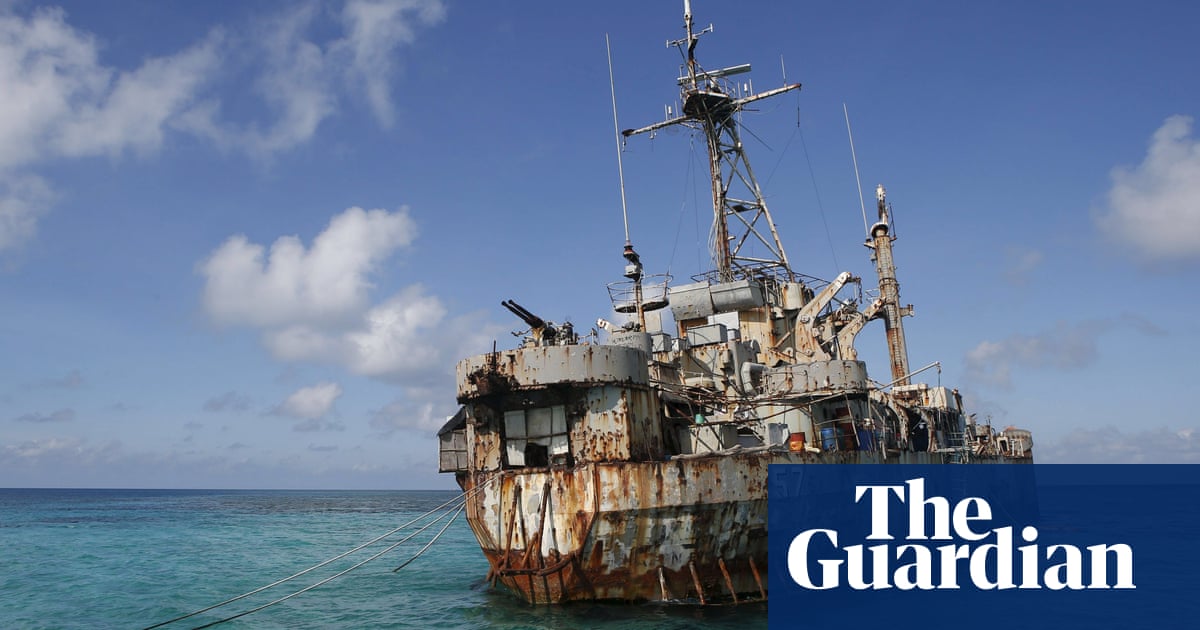Vice Admiral Eduardo Santos was in charge of the Philippine navy at a time of ‘creeping invasion’ by China. Then along came an unusual idea
More than 25 years ago, the BRP Sierra Madre was sent off for one final, secret voyage. In the darkness of night, the Philippine navy ship sailed from Manila Bay into the remote waters of the South China Sea. Then, to the surprise of many, it ran aground, and hasn’t moved since.
“I did it as quietly as I could, so I would not raise any hackles among anybody,” says retired Vice Adm Eduardo Santos, who was chief of the navy at the time. To him, it was a case of mission accomplished. His plan had been to run the ship on to a small reef known as Second Thomas Shoal, one of the world’s most fiercely contested maritime sites, without China knowing. The move would help the Philippines defend the area for decades to come.
“The first reaction was the Chinese ambassador knocking at my office early in the morning when they heard about it … I said, ‘well, it was supposed to be on the way [to a mission], and it ran aground’,” says Santos. With hindsight, Santos, who is now 80, can smile about it, though he, more than most, is keenly aware of how delicate the issue remains.
If the shoal had been left unoccupied, it would have been lost to Beijing, he says, because the Philippines was already facing a “creeping invasion” by China.
Beijing had already seized Mischief Reef, an atoll just 21 nautical miles away, despite being within the Philippines’ exclusive economic zone (EEZ) – an area that stretches 200 nautical miles from a state’s coast, giving it special rights to build or exploit resources in the area. Second Thomas Shoal is also with the Philippines’ EEZ.
I think it’s called “salami diplomacy” or something along those lines, where they just take a little more each time
Salami slicing diplomacy iirc
Oh, I thought it was because they were slowly pushing their salami further and further in.
I suppose that is one way to quickly set up some infrastructure, not all that different from what Imperial Japan had planned for the Yamato. Very clever.
What had the Japanese planned for the Yamato?
When the war was obviously in the ‘last stand’ phase for the Imperial Japanese Navy, they sent their pride, the largest battleship in the world, Yamato, with just nine light escorts to run itself aground on the shore of Okinawa island and act as an unsinkable fortress there. Unfortunately it had to go past about eleven carriers with almost 400 aircraft and… it didn’t make it.
Towards the end of the war their navy was pretty much toast, and the ship wasn’t really all that useful anymore. Took a lot of fuel that they didn’t have, too vulnerable to torpedos and aircraft carriers without sufficient escorts, all sorts of problems.
So they were going to run it aground and use it as a stationary artillery battery for the inevitable ground invasion. Had to send it to Okinawa first though, and it got swarmed by planes and sunk before it got there.
edit to fix an error



